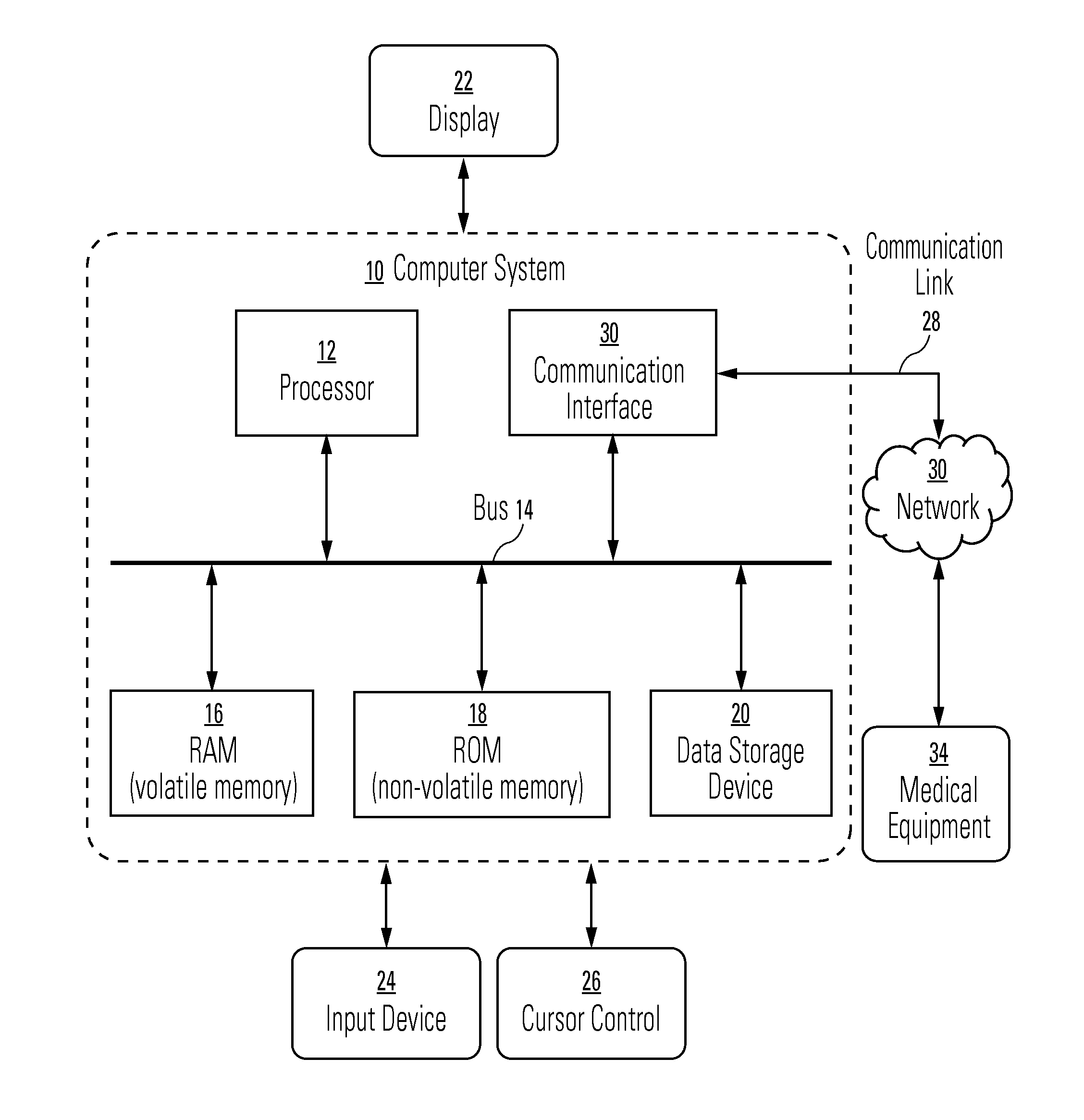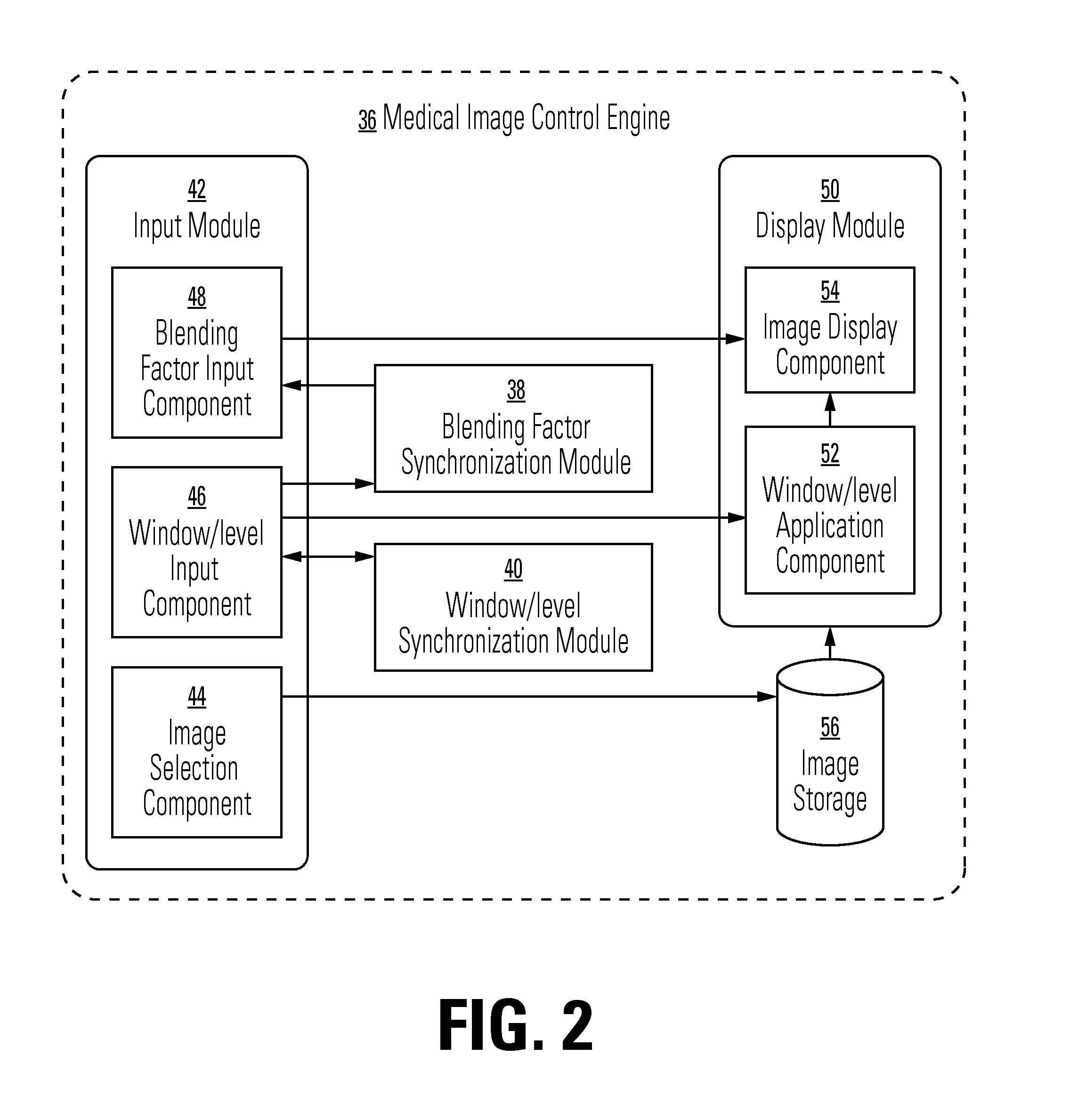Method and system for interactive control of window/level parameters of multi-image displays
- Summary
- Abstract
- Description
- Claims
- Application Information
AI Technical Summary
Benefits of technology
Problems solved by technology
Method used
Image
Examples
first embodiment
[0058]FIG. 9A is a block diagram illustrating a general mapping method for executing a synchronized window / level adjustment for multiple images as described in FIG. 8. In general, the synchronization mechanism can use any possible mapping between input and output parameters. This can be implemented by using mathematical expressions or lookup tables, some of which may be constructed empirically. With such mappings, it becomes possible to synchronize the window / level values of two images that have different modalities and / or that are displayed using different color maps. A mathematical function or algorithm module 128 receives an input 130 containing the window / level parameters associated with the first image 60, processes the window / level parameters of the first image 60, and generates an output 132 containing the window / level parameters of the second image 62. Other optional data inputs 134 that may be fed into the mathematical function or algorithm module 128 include the pixel data...
second embodiment
[0059]FIG. 9B is a block diagram illustrating a pass-through method for executing a synchronized window / level adjustment for multiple images as described in FIG. 8. The mechanism copies the input values and passes them directly to the output, resulting in an output 136 having the same data as the input 130. The pass-through method is most suitable if the input and output images are acquired by identical, calibrated scanners because identical window / level parameters result in a very similar visual appearance in that case.
third embodiment
[0060]FIG. 9C is a block diagram illustrating a histogram equalization method for executing a synchronized window / level adjustment for multiple images as described in FIG. 8. If the two images 60, 62 are of the same modality but are generated by scanners from different manufacturers, the pass-through mechanism might produce unsatisfactory results, in which identical window / level parameters may produce a different visual contrast in the display. This is mainly caused by deviations in the scanner calibration routines and by scatter artifacts in the acquisition. The latter is especially visible if one image is acquired by a diagnostic CT scanner and the other one by a cone-beam CT scanner. In such situations, histogram equalization can produce results that are visually more similar. A histogram equalization algorithm module 138 is an optimization algorithm that tries to match the visual appearance of both displayed images as closely as possible. The histogram equalization algorithm mod...
PUM
 Login to View More
Login to View More Abstract
Description
Claims
Application Information
 Login to View More
Login to View More - R&D
- Intellectual Property
- Life Sciences
- Materials
- Tech Scout
- Unparalleled Data Quality
- Higher Quality Content
- 60% Fewer Hallucinations
Browse by: Latest US Patents, China's latest patents, Technical Efficacy Thesaurus, Application Domain, Technology Topic, Popular Technical Reports.
© 2025 PatSnap. All rights reserved.Legal|Privacy policy|Modern Slavery Act Transparency Statement|Sitemap|About US| Contact US: help@patsnap.com



